Last week I wrote about the 100th anniversary of the building of Zion Lutheran Church in Chattanooga, Ohio, the current brick building that was built in 1916 and dedicated in 1917.
There is one item inside the church that I am very familiar with—the Page pipe organ. I have played on it nearly every week for over 50 years. Although Zion’s Page organ is not original to the brick church it is probably about 90 years old.
It appears that Zion’s old frame church also had a pipe organ. You can see the pipes in the background on the right side of this 1913 confirmation photo, which I believe was taken in the old frame church.
The newly built brick church had a pipe organ installed and you can see the pipes on the left in this 1917 confirmation photo. This would have been one of the first photos taken inside the new church. Perhaps they moved the organ from the old church building into the new building in 1916. Today the organ chamber with the pipes is in this same location, but the pipes are concealed behind a louvered wall. Sometime during the first half of 1935 Zion Chatt purchased the Page pipe organ that we still use today.The Page Pipe Organ Company was located in nearby Lima, Ohio. The company made home and theatre organs beginning in 1922 and flourished during the years between 1922 and 1930, when they made over 100 theatre organs. That was era of silent movies and these theatre pipe organs accompanied the silent movies with music and sound effects. The Page Pipe Organ Company declined with the advent of talking movies and the Great Depression.
I have heard over the years, from several church elders, that Zion’s Page organ came from a theatre in St. Marys. This makes sense for several reasons. The Page Organ Company in Lima was not all that far away. St. Marys had at least two or three theatres at that time and at least one of those theatres could very well have had a Page Organ. In 1935 theatres were changing from silent movies to movies with sound and and they were getting rid of their pipe organs. Pipe organs were taken out of the theaters and many of them were relocated to local churches. My friend Dwane has researched the Page Organ Company extensively and has discovered where many of these Page organs are located today. And finally, the pastor at Zion Chatt in 1935 was Rev. Carl Yahl, who was from St. Marys. He would have known about the availability of an organ from a theatre in his home town and could have taken the opportunity to purchase one for Zion Chatt.
It is a good theory and makes a good story but unfortunately I have not been able to prove it.
However, I was fortunate enough to find one newspaper article on page 6 of the 13 June 1935 issue of the Willshire Herald. It provides a time period for the organ’s purchase:
Organ Recital At Zion Lutheran Church
An organ recital in dedication of the new organ recently installed in the Zion Lutheran Church in Chattanooga, will be held Sunday, June 16, at 8:00 p.m.
Following is the program that will be rendered:
Prayer, Stark.
Chant d’ Amour, Gillette.
“Jubilate Deo,” Silver.
Soprano Soloist—“Still, Still With Thee”—Ward Stephen.
Berceuse, Godard.
Prelude and Fuga in G, Christiansen.
The Shepherd Flute, Christiansen.
Choir, “The Silent Sea”—Neidlinger.
Autumn, Johnson.
“Nobody Knows the Trouble I See,” Gillette.
Torchlight March, Clark.
Soloist, Mrs. Koneta Stroh.
Organist, Carl Yahl.
Sunday School 9:30 a.m.
Church Service 10:30
Organ Recital, 8:00 p.m.
Rev. Carl Yahl, pastor
Was it a brand new organ? Or was it a used organ that was “new” to the church.
I looked for other Willshire Herald articles during that general time period that might tell about the acquisition of the organ. Nothing. I even spent several hours looking through old St. Marys newspapers on microfilm, hoping there would be some mention that one of the theatres in St. Marys had modernized and was showing talking movies during that time period. Again, nothing.
Zion’s Page pipe organ is a very small organ compared to some of the other Page organs and compared to most other church pipe organs. But it has a nice sound and is in very good condition. It is maintained by the Holycross Brothers at Lima Pipe Organ, who service it twice a year.
Theatre organs usually have a horseshoe shape and their tabs are also arranged in a horseshoe. Some of the sounds made by the theatre organs were unsuitable for church music and were removed when they were installed in a church. These included certain horn sounds, xylophone, and drums. I remember that our Page organ once had a xylophone stop on it but was removed after the chamber flooded. Soft strings were installed in its place. Our organ has 2’, 4′, 8′, & 16’ flutes; an 8’ diapason, 8’ & 4’ strings, and a 4’ horn.
Zion’s Page pipe organ is the baby brother to this Page organ at the Embassy Theatre in Fort Wayne:
Our Page pipe organ has had its moments over the 50+ years I have played it. It is an old instrument and things do stick and break down from time to time. Some problems I have encountered:
Ciphers. Occasionally, during the cold winter months, the dryness from winter heating causes organ ciphers—an unwanted, annoying, continuous wail, usually a shrill note (or notes) heard when the organ is on. The only way to stop the sound is to turn the organ off, which, as the air decreases in the chamber, causes the shrill sound to gradually drop in pitch and fade away. Like the air going out of a noisy balloon. The sound will start up again when the organ is turned on. Very annoying and rather disruptive during a service. At least to the organist and the minister. Usually there is only one cipher at a time but last year there were several at once on one particular Sunday. We have learned that it is best to run a humidifier in cold weather.
Temperature. The pipes change pitch according to the temperature. This is really not noticeable unless I am playing the organ with the piano. We enjoy playing piano and organ duets and they sound best if both instruments are in tune with each other. We keep the piano tuned at one pitch, a “winter” pitch. That means the piano and organ are in tune during the cold months but are not in tune when the temperature gets above 68-70 degrees. During cold weather the organ chamber door must be left open so the heat from the sanctuary will warm the pipes and bring them up to the correct pitch to match the piano. Otherwise, since the chamber is in an unheated room with an outside wall, the pitch would be too far the other way.
Rain. Then there was the time the roof leaked over the organ chamber and water filled the pipes. That caused a very nasty organ sound. The organ was not playable. That episode resulted in having the pipes repaired and refurbished and the whole pipe chamber being rebuilt, repainted, and water-proofed. The whole process took several months and a whole lot of work for the Holycross brothers.
You just never know what unexpected sound might come out of a pipe organ, but our Page organ is a unique instrument that provides a wonderful sound for our worship services.
[1] In the 1913 photo: No one identified in front row; Row 2: Marie Baker, Marie Heffner, ?, Rev. Loehr, Leona Strabel, Marie Becker, Clara Miller; Row 3: ?, ?, ?, Leona Baker. The others in the class, but not identified in the photo: Lavina Marie Becher, Donald Heitzwebel, John Stein, Catharine Kuehm, Roman Heffner, Fried Berron, Raymond Kuhn, Walter Edward Heffner, George Stein.
[2] In the 1917 photo: Front row: Luetta Baker, Lucile Becher, ?, Louise Becher, ?, Matilda Becher, Anna Ruth McGough; Row 2: Clarence Kuhn, Walter Becher, ?, Charles Andrews; Row 3: ?,?, Rev. Heuer, ?, Vera Heffner (far right). The others in the class, but not identified in the photo: Frieda Louisa Hoehammer, Harold Roman Bender, Ralph Huffman, Lee Kuhn, Florence Kuhn, Clara Linn.
Sources:

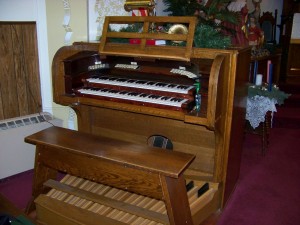


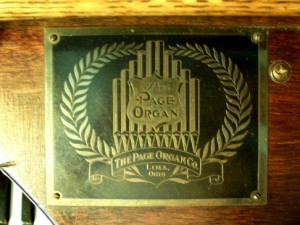
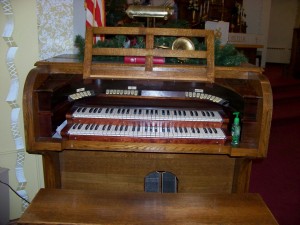
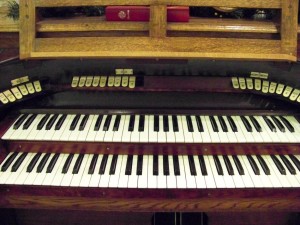
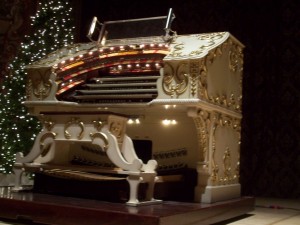
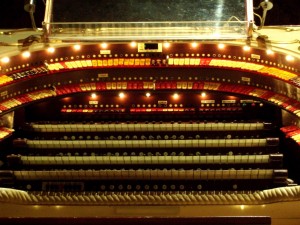
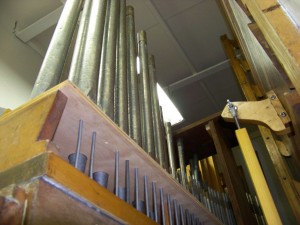
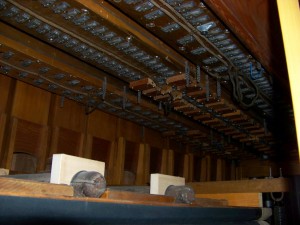


6 comments
Skip to comment form
Any idea on who the people are in the confirmation pictures posted above?
Author
I know who some of the people are, but not all. In the 1913 photo: No one identified in front row; Row 2: Marie Baker, Marie Heffner, ?, Rev. Loehr, Leona Strabel, Marie Becker, Clara Miller; Row 3: ?, ?, ?, Leona Baker. The others in the class, but not identified in the photo: Lavina Marie Becher, Donald Heitzwebel, John Stein, Catharine Kuehm, Roman Heffner, Fried Berron, Raymond Kuhn, Walter Edward Heffner, George Stein.
In the 1917 photo: Front row: Luetta Baker, Lucile Becher, ?, Louise Becher, ?, Matilda Becher, Anna Ruth McGough; Row 2: Clarence Kuhn, Walter Becher, ?, Charles Andrews; Row 3: ?,?, Rev. Heuer, ?, Vera Heffner (far right). The others in the class, but not identified in the photo: Frieda Louisa Hoehammer, Harold Roman Bender, Ralph Huffman, Lee Kuhn, Florence Kuhn, Clara Linn.
If you can identify any it would be great. I will also put this information into the blog post. Thanks for asking!
Karen, you have been a remarkable organist for over 50 years. How fortunate and appreciative ZION must be. As I recall you likely suceeded Pauline DeArmond after her many years as organist.
Author
Thank you, Farrel. Yes, I started playing regularly after Pauline retired, but I believe your sister Mary Ann and Ruth Hershberger also played during that time. There was a period of time when I was at college and did not play regularly.
Dear Karen, I have just made an entry for the organ on the Organ Historical Society Database. I will notfy you when the entry posts online. If the organ came from a St. Mary’s theatre…it was either the Regent or the Strand. Both had Page organs. I would love to get some photos for the account as well as the stoplist. If you are willing, please contact me at: theorganman@hotmail.com. Best wishes from Stanwood, Washington! Jim S. 🙂
Author
Thank you so much for writing and adding our Page organ to the database. It is great that it will be included. I have tried to find out the history of this organ but I only have the recollections of some of the old-timers, most of whom have passed away. I will send you some photos of the organ and the stoplist soon. I imagine that it was modified for church use when they acquired it.